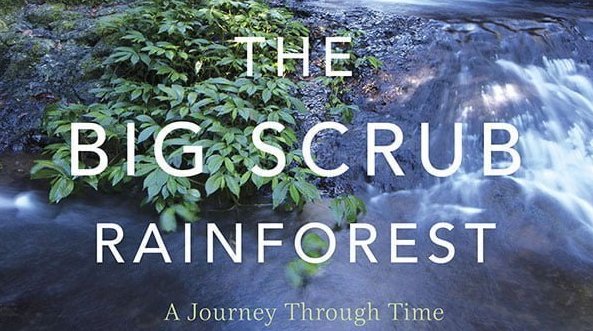Over the past 25-plus years, Big Scrub Landcare has cared for more than 50 remnants of subtropical lowland rainforest as well as establishing new patches of rainforest from replanting. During this time, our team has worked with countless experts, spent innumerable hours in nurseries and in the field; and through plenty of trial and error, we’ve learnt a lot about the ecology and best practice behind rainforest restoration in the unique Big Scrub. We’ve captured much of this in our guides, books and the good work of our partners. The below is a quick list of the major resources that compile this wealth of information.
Big Scrub Landcare’s Rainforest Restoration Manual
Our Rainforest Restoration Manual is a practical data source for Landcare groups, land managers and rainforest regenerators. It is a comprehensive guide for rehabilitating and caring for existing subtropical rainforest remnants and re-establishing rainforest on land from which it has been cleared.
Head to this link to get hold of a copy.

‘The Big Scrub Rainforest: A Journey Through Time’ Coffee Table Book (Currently Out of Stock)
Curious to explore the Big Scrub, learn about its history, and the indigenous stories of our region and people behind the places – the dedicated professionals who care for our rainforests and their threatened species? Big Scrub Landcare’s ‘Journey through Time’ is a stunning publication complete with beautiful rainforest photography and drawings, sharing insights of the Big Scrub Rainforest, its past, present and conservation for the future. This publication showcases contributions from eminent conservationists, ecologists, artists and photographers to celebrate our rainforests and their threatened species. It comprises 175 pages exploring the vales of our magnificent rainforest, the places, their meanings and restoration projects saving our rainforest for future generations. A perfect gift for family and friends. All proceeds go to protecting the Big Scrub. The book can be purchased at the Book Room in Byron Bay, Book Warehouse in Lismore – limited stock remaining before our updated edition is released.

‘Australian Rainforest Seeds’ Guidebook
This book co-authored by our Vice President, Mark Dunphy of Firewheel Rainforest Nursery, is a guide to collecting, processing and propagating rainforest seeds. If you are curious about the lifecycle of a rainforest, transforming from seed to soaring trees, this beautifully photographed book focuses on the unique diversity of 300 subtropical rainforest fruits and seed and how you can propagate and grow your own forest. Click here to find out more.

Tree Identification Guides
In addition to the above resources, here are some of the field guides for tree identification that we recommend:
Trees and Shrubs of NSW and Southern Qld (the Red Book) by Williams, Harden and McDonald, is a great field guide for Big Scrub trees and can be purchased at www.rainforests.net.au/product/rainforest-trees-and-shrubs.
Hugh and Nan Nicolson’s books, Australian Rainforest Plants (I-VI), each contain over 100 species; each species’ appearance, distribution and behaviour in the wild are described, as well as its use in the garden. They can be purchased at www.rainforestpublishing.com.au.
The Nicholson’s have also combined with the authors of the Red Book to produce an interactive digital key, augmented by 12,000 photos of all Australian rainforest trees, shrubs and vines. This digital resource is available at www.rainforestpublishing.com.au.
The ‘bible’ of trees, ‘Rainforest Trees of Mainland South-Eastern Australia’, by A. Floyd, has more detailed information on alternate names, bark, habitat, distribution, timber uses and seed germination – you can find it at www.andrewisles.com/pages/books/27412/a-g-floyd/rainforest-trees-of-mainland-south-eastern-australia. If you find fruit or seeds, a great book to have is ‘Australian Rainforest Fruits’, available from www.publishing.csiro.au/book/6968/.
Of course today there are also mobile apps available for snapping photos and identifying trees, although some do so with varying success. Check out the CSIRO’s iNaturalist, PlantNet or PictureThis to give them a go (some will charge a fee). Let us know if you’ve got any favourites!


